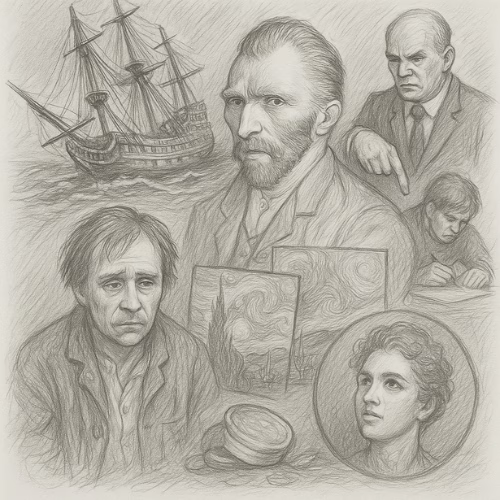The Vasa Museum was, without question, one of the most impressive sights of my life. Do you know why people sometimes choose to travel alone? For me, a solo journey is a way to release everything pent up inside: all the frustrations of personal life, the injustices I’ve witnessed—corruption, imprisonment, the endless cycle of power and betrayal. But what has always stung the most is how society discards the very people who serve it best—the thinkers, the givers, the ones who care. Once, when I was young and full of ideals, I raged against that. I had hope, I fought. But not anymore. Now, I let it all go. I focus on myself instead of things I can never change.
Letting go is like the Vasa herself, sinking beneath the sea for more than 300 years.
I’ve always been drawn to ships and the sea, so of course I was curious enough to buy a ticket and go inside. They gave me headphones to wear, and as I walked the decks, a calm, resonant voice guided me through the ship’s history—each step unfolding the grandeur of it all.
I couldn’t believe the sheer size of the wooden beams, the weight of the cannons—tons of iron, stacked like defiance itself. The carvings were intricate, almost holy in their detail. I could feel the ship’s weight in my bones: how could it not have sunk? And yet, what a marvel that the people of the 17th century could build something so ambitious.
It was the most striking museum visit of my life, and I loved everything about it—the chill in the air, the warm voice in my ear, the faint scent of old wood. I thought to myself: I could sleep here, among these ancient timbers.
No matter how hard you try, how fully you give of yourself—sometimes life still swallows you whole, like the sea did to the Vasa.
But even under the water, there’s a beauty that can’t be replicated.
The ship lay buried for centuries, yet here it is today, pulled from the depths, breathtaking in its ruin.
We’re the same, aren’t we?
Crushed, forgotten, yet carrying something unique no ocean can erase.
As I said goodbye to that ship, I remembered my mother’s voice:
“There are those who die in poverty but whose names live forever—like Van Gogh, whose paintings sold for millions only after he was gone,
or like countless writers who were never rich in life but whose stories outlived every empire.”
We are like that too.
In life, maybe nothing seems fair, nothing seems secure.
But in death—sometimes that’s when the world finally sees our worth.
The Vasa is proof: a monument to the things we try so hard to do, even if we’re doomed to sink.
Walking out of that museum, I felt something gentle settle over me—like the sea itself had spoken.
Nothing lasts forever, not even injustice.
The ship’s timbers creak, but they still hold.
And maybe that’s all we’re meant to do, too.



